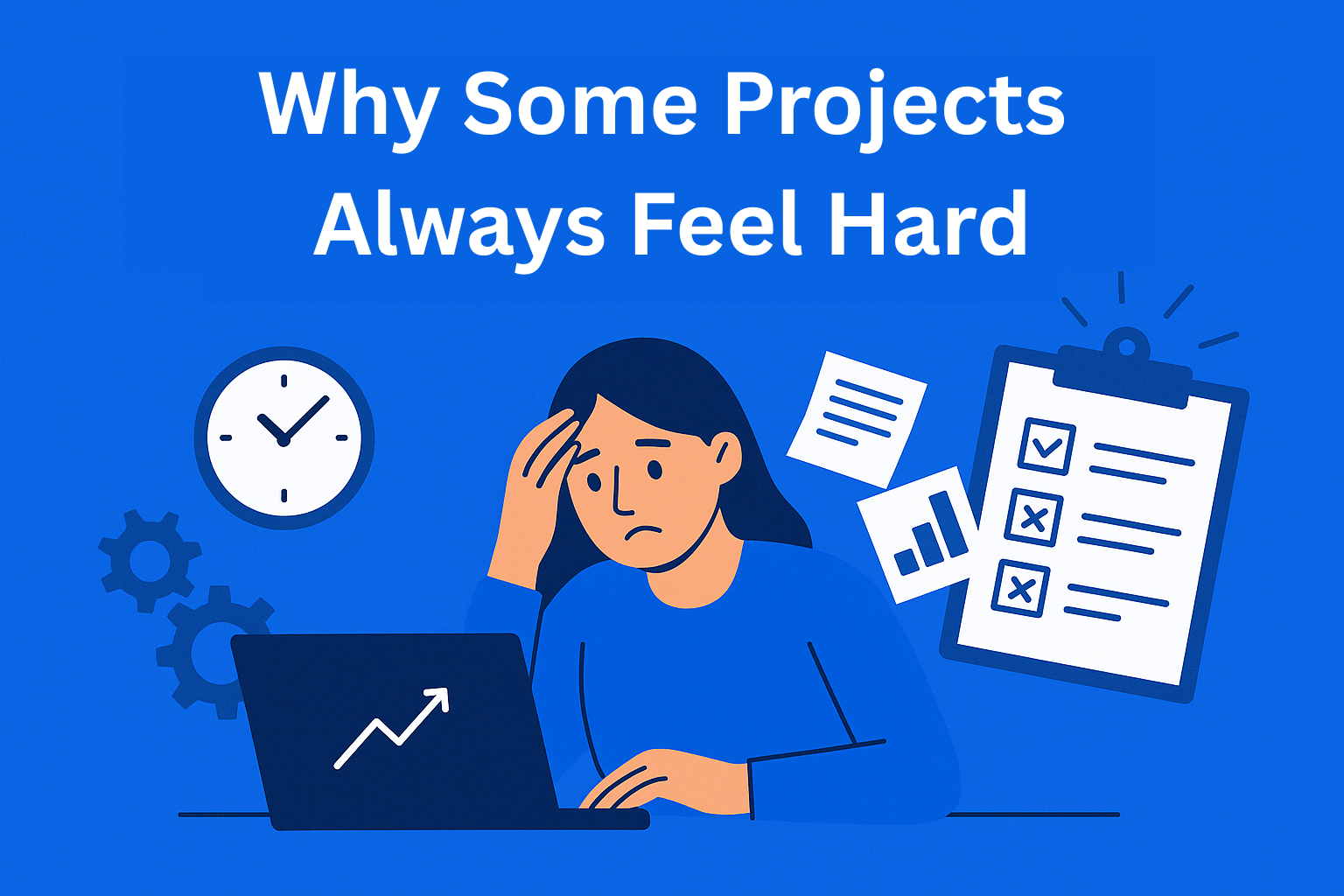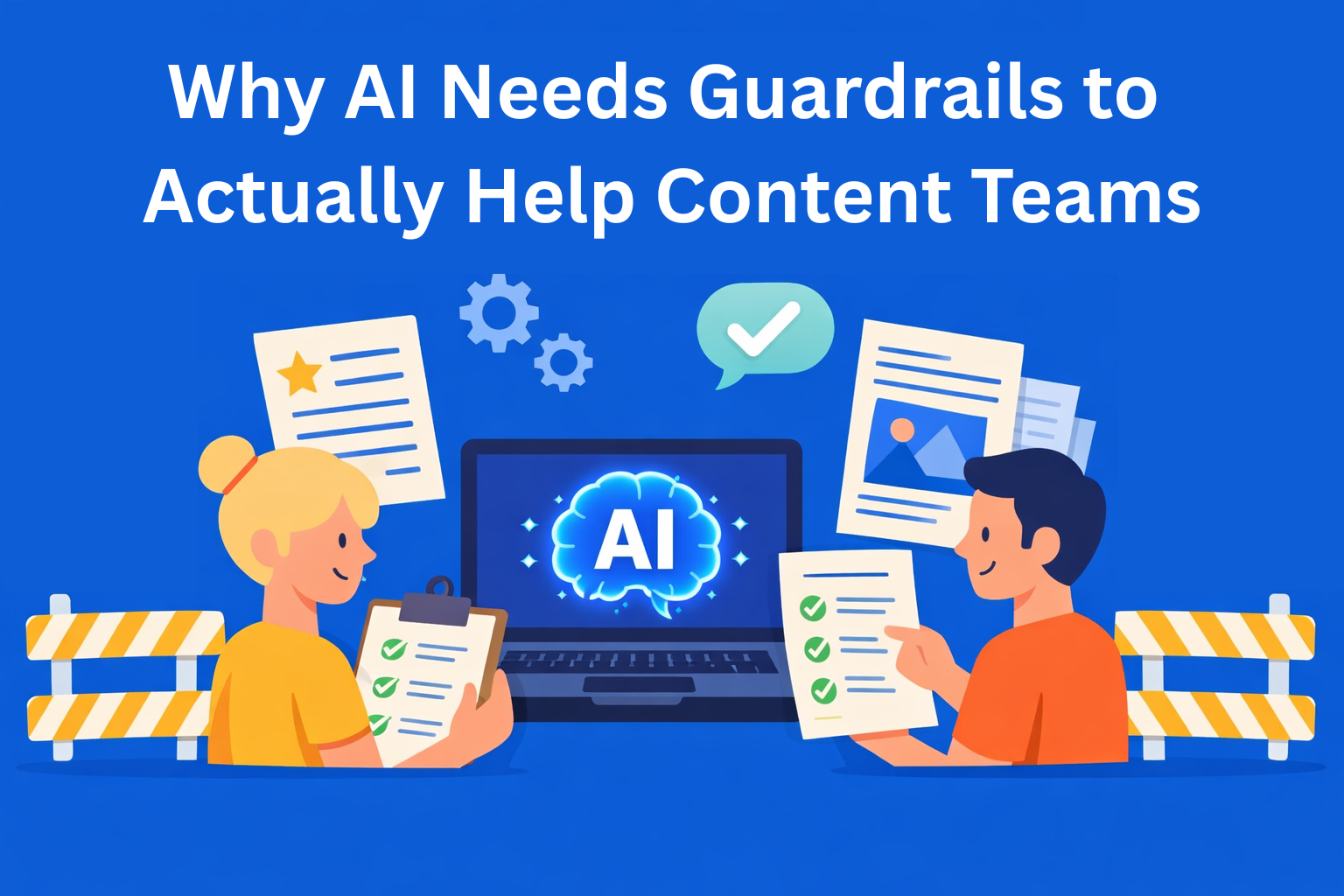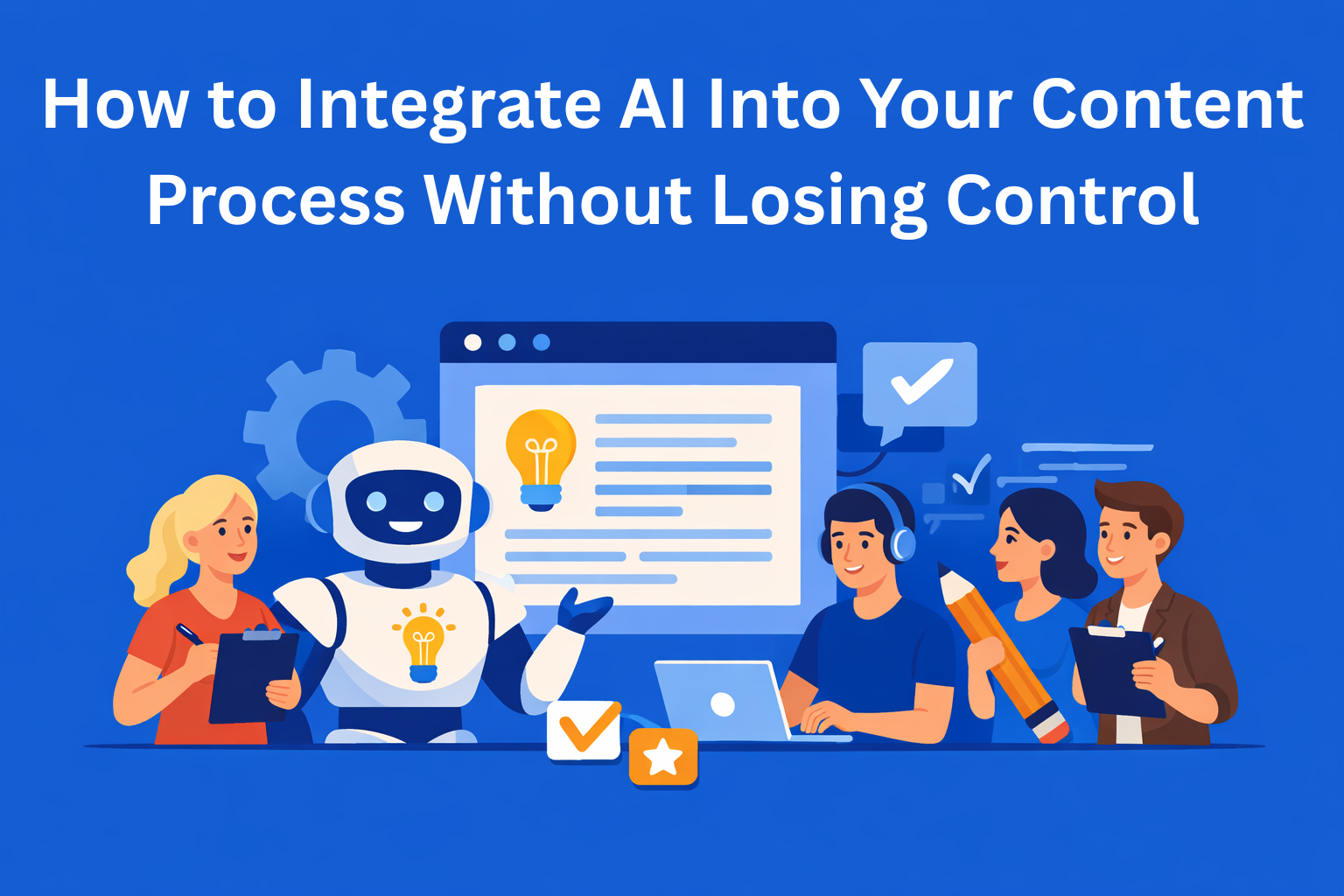Why Some Content Projects Always Feel Like a Struggle
Some content projects are just harder. In this post, we unpack why that is, which types of tasks tend to cause the most friction, and how to make them easier with better prep, clear processes, and tools that work for you - not against you.

Not all content projects are created equal.
Just like in any other job, some tasks are quick wins - a short blog post, a refreshed landing page, a simple case study. And then there are the projects that seem to drag on forever (yes, website redesign, I'm looking at you). The ones that derail timelines, cause internal headaches, and leave everyone wondering why it was this hard.
And here’s the thing: it’s not always about the process or the topic being too complex. Sometimes, it’s about the type of project and how (un)prepared we are for what it demands.
The good news? If we already know which content projects tend to be more difficult, we can plan for them differently. Put a few smart systems in place, and the same projects that once caused sleepless nights can become much more manageable.
In this blog, we’ll break down why some content projects always feel harder, what to do about it, and how a better process (and the right tools) can make all the difference.
Key Takeaways
- Some projects are inherently more complex - Website content, whitepapers, and cross-team collaborations often involve more people, steps, and sign-offs.
- Clear briefs are non-negotiable - Writers need structured inputs: audience, goals, voice, deadlines, and references before starting.
- Pre-defined workflows reduce chaos - Mapping who writes, reviews, and approves at each stage eliminates blockers and delays.
- Templates and breakdowns ease the load - Using structured templates and dividing big tasks into smaller steps lowers overwhelm and boosts progress.
- Feedback must be planned - Schedule review windows, build in time for edits, and document lessons to avoid repeating the same pain next time.
The Reality: Some Content Projects Are Just Harder
Before we dive into the fixes, let’s call out a few types of projects that tend to be troublemakers:
- Website redesign content (big volumes, scattered stakeholders)
- Longform content or whitepapers (multiple rounds of approvals, subject-matter input)
- Thought leadership pieces (lots of positioning nuance, CEO sign-off required)
- Collaborative content (internal SMEs, guest writers, or cross-department input)
- Product updates or technical explainers (accuracy matters, input from multiple teams)
If you're nodding your head on each one, it’s because they usually come with added layers of complexity:
- Multiple people are involved at different steps
- Unclear ownership or shifting priorities
- Lack of structure or templates
- Too many versions floating around
- Content waiting on input or sign-off
It’s not that these projects are doomed - but they need more intentional handling than your everyday blog post.
How to Make Difficult Content Projects Easier
You won’t eliminate the challenge completely, but you can make these projects not feel like pulling teeth.
Here are a few actionable strategies content managers can use to reduce the stress, keep things moving, and improve outcomes.
1. Start With a Clear Brief (And Make It Mandatory)
Hard projects often go off the rails before they even start - simply because the writer didn’t get what they needed upfront.
A solid content brief should include:
- Who the audience is
- The key message or angle
- Word count or format expectations
- Sources or SME input required
- Deadlines for each step
- The tone and voice to use
- Links to reference material
If you’re using a platform like EasyContent, you can build these directly into your templates. Writers won’t need to go hunting for context - it’s all there when they open the editor.
2. Map Out the Workflow in Advance
Complex content projects can’t be handled with a “just write it and we’ll figure it out later” mindset.
You need to know:
- Who’s writing
- Who’s editing
- Who’s reviewing (and when)
- Who gives the final sign-off
- What happens after approval (design, upload, publish?)
Use a visual tool or a dedicated content operations platform to map this out. In EasyContent, you can create custom workflows so everyone knows exactly what step they’re responsible for - and when it’s their turn to jump in. No more “Is this ready for me yet?” messages.
3. Use Templates That Do the Heavy Lifting
Templates aren’t just about formatting - they’re about setting expectations. Especially for recurring content types (like product updates, case studies, or knowledge base articles), a well-structured template can take 30% of the mental load off the team.
In EasyContent, you can customize templates with fields like:
- Single line text (for titles, "written by", etc.)
- Paragraph text (Main content body, Key Takeaways, Excerpt, etc.)
- Files/Image Upload (So you can associate a file with the content)
- Checkboxes, Radio buttons, Date, Dropdown select (for additional info, voice, or tone)
- Heading and Guidelines (giving your team more direction on the project)
This means the creator spends more time thinking about content than the structure.
4. Break It Down (Seriously, Just Break It Down)
One big piece of content can feel overwhelming. A single whitepaper can involve writing, editing, research, approvals, layout, design, and formatting. And when people are overloaded, they delay.
Instead, split it up.
Assign the outline separately. Then the draft. Then the visuals. Then the review. You can even assign sections to different writers if needed.
If you're using EasyContent’s Content Hierarchy feature, you can group these items so the team still sees the full picture - but each task feels smaller and more doable.
5. Build in Feedback Time (But Put It on the Calendar)
One of the biggest delays in complex content projects is feedback - either it comes too late, or it comes all at once and blows up the piece.
You can avoid this by scheduling review windows upfront. Include them in the timeline just like you would a writing deadline.
Even better? Use review stages in your content tool (like EasyContent) so reviewers are automatically notified when it’s their turn - and they can leave comments in context. No more chasing people in Slack or emailing PDFs.
6. Document as You Go
Hard content projects often lead to reinventing the wheel. You finally get it done - but next time you do something similar, you’re back at square one.
Take time after the project to note:
- What worked
- What caused delays
- Who needs to be involved next time
- What templates could be improved
Then turn those notes into updated templates or workflows. Future-you (and your team) will thank you.
Why a Dedicated Platform Makes a Difference
Managing high-stakes content projects in Google Docs and spreadsheets is possible, but it’s rarely painless. Let's face it, they weren't meant to be used for ContentOps, let alone difficult projects.
A platform like EasyContent helps reduce the stress by giving your team:
- A clear workflow for each project
- Centralized briefs, guidelines, and deadlines
- Templates that include structure and instructions
- A home for feedback, revisions, and approvals
- Visibility into what’s done and what’s still in progress
It’s not about adding more process. It’s about reducing friction. So your team can focus on creating the content - not chasing it.
Final Thoughts: The Projects Won’t Get Easier - But Managing Them Can
There will always be content projects that are more complex, more collaborative, and more high-stakes than others. That’s the nature of the job.
But they don’t have to feel like a struggle every time.
With the right planning, documentation, and tools in place, you can make even the most intimidating projects run smoother - and give your team the clarity, confidence, and space they need to do their best work.
So the next time you’re gearing up for a big content lift, don’t just brace for the pain. Prepare for it - and build the systems that take the pressure off.
Because it’s not just about the content. It’s about the process that gets you there.






